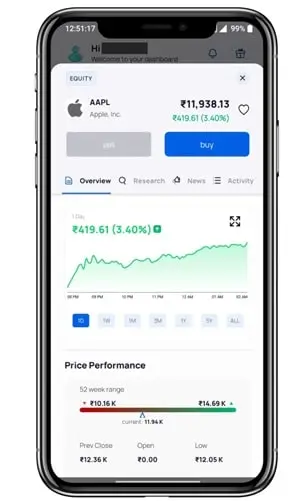Thanks to online trading apps, pretty much anyone can now invest and trade in financial markets from the comfort of their home or on the go. With such apps providing access to a wide range of financial instruments and tools, online trading has become a popular avenue for people looking to earn handsome returns in the financial markets.

Image by Freepik
However, with great opportunity comes great risk. And that is why risk management is the key to success in the world of trading. In this blog, we will discuss what risk management is, its functions, the various types of risks, and most importantly, how you can effectively implement risk management in online trading.
What is risk management?
Risk management is the process of identifying, analysing, and mitigating risks to minimise the impact of potential losses. Without proper risk management, investors can quickly lose their capital, making it ever more difficult to recover from any losses.
For example, imagine you’re a relatively new trader who’s looking to enter the market with a decent amount of money. If you don’t implement the appropriate risk management strategies, you might end up executing trades based on emotions rather than rules, and a few such trades going against you could wipe out most of your tradable capital. Thus, effective risk management is essential to avoid such scenarios and protect your ability to continue trading.
Functions of risk management
Risk management involves several different angles of attack that work together to ensure a well-rounded approach to risk mitigation. Some of these are:
- Risk identification: This is the process of identifying the potential risks in a given trading situation.
- Risk assessment: Once you’ve identified the risks, the next step is to assess the likelihood and severity of each risk. This information helps you to prioritise the risks to be addressed first and the level of mitigation required.
- Risk mitigation: This involves implementing strategies to reduce or eliminate the impact of potential risks. Mitigation strategies could include diversification, setting stop-loss orders, and using position sizing calculators to determine the appropriate amount to invest.
- Risk monitoring and control: After implementing risk mitigation strategies, it’s essential to continually monitor your portfolio and adjust your strategies as needed. This step helps you to ensure that your portfolio remains aligned with your trading goals and risk tolerance.
Types of risks:
There are several types of risks associated with online trading. These include:
- Market risk: This refers to the risk of losing money due to market fluctuations, caused by various factors such as changes in interest rates, volatile exchange rates, and evolving economic conditions.
- Liquidity risk: This refers to the possibility of losing money because you’re unable to sell an investment quickly at a profitable price. This can happen for various reasons, such as market volatility, a lack of buyer interest, or just poor timing.
- Operational risk: This type of risk refers to the possibility of losing money due to failures in operational processes, such as errors in order execution, system failures, or cyber-attacks.
- Legal risk: This refers to the possibility of facing legal or regulatory actions, such as fines, sanctions, or lawsuits, as a result of any missteps you might take. This is not a very significant risk for retail traders.
- Emotional risk: This refers to the risk of emotional responses to stressful trading situations that can cloud a trader’s judgement and lead to bad decisions.
7 tips for trading risk management strategy
Effective risk management involves the use of various techniques and strategies to minimise the risks associated with trading.
1. Set rules to keep emotions out of trading decisions
To reduce emotional risk, it’s imperative that you set rules and stick to them, no matter what. This can include deciding the maximum percentage of your capital you are willing to risk on a trade, the minimum profit you require before exiting a trade, or the maximum loss you are willing to accept.

Image by standret on Freepik
In general, you should:
- Only trade with money that you can afford to lose
- Set a maximum amount of money that you are willing to lose on any single trade
- Avoid trading based on rumours or hearsay
2. Diversify
If you’re a trader, instead of using all your available capital for trading (which is extremely risky), you should make sure that a sizable chunk of your total available capital is invested in various kinds of assets. Through such diversification, you will create an investment portfolio that will be resilient to the impact of any single asset or trade.
You can create a diversified portfolio by:
- Investing in different asset classes, such as stocks, bonds, and commodities.
- Invest in different sectors within a single asset class, such as technology, healthcare, and finance.
- Use ETFs or mutual funds to diversify your portfolio across multiple stocks or asset classes.
3. Use stop-losses to limit losses
A stop-loss order is an order that instructs your trading platform to automatically sell a specified security when it reaches a certain price. This can help you limit your losses in case a trade goes against you. It is important to set the stop-loss at a level that is not too close to the current market price to avoid being stopped out too soon.
To sum up:
- Use stop-losses to automatically sell your position if it falls below a certain price.
- Adjust your stop-loss orders as the market moves to lock in profits and limit losses.
- Where possible, use a “trailing” stop-loss to protect profits and limit losses at the same time.
4. Understand the risk/reward ratio
The risk/reward ratio is the ratio of the potential profit of a trade to the potential loss. A good risk/reward ratio is generally considered to be 2:1 or higher, meaning that the potential profit should be at least twice the potential loss.
5. Trade the right position size to optimise risk
The position size is the amount of capital invested in a trade. Trading the right position size can help you optimise your risk and avoid overexposure. A general rule of thumb is to not risk more than 2% of your capital on any single trade. This means that if your trading account balance is 10,000, you should not risk more than 200 on any single trade.
6. Use a mobile app to trade
In today’s digital age, mobile apps have become essential tools for traders. With just a few taps on your smartphone, you can buy and sell securities, monitor market trends, and access a wealth of financial information. For example, you may be able to set up alerts to notify you of market changes, use advanced charting tools to analyse trends, or access educational resources to improve your trading knowledge.

When it comes to selecting the best trading app for your needs, it’s important to consider factors such as user-friendliness, security features, fees, and available investment options.
7. Keep up-to-date with market news
The financial market is constantly changing, and keeping up with it can help you make informed trading decisions and adjust your risk management strategy accordingly. You can use various news sources such as financial news blogs, social media, and market analysis reports to stay up-to-date.
Minimise risks, maximise rewards!
In conclusion, to succeed in online trading, effective risk management is absolutely crucial. Use the tips in this blog to ensure that your risk exposure is always within acceptable bounds, thus maximising your potential returns. Remember to always set rules, use stop-loss orders, diversify your overall portfolio, and stay informed about the latest market news and trends. So go ahead and put together the risk management strategy that works for you, so that your trading goals become even more achievable!
Yogesh is a Co-Founder at Appreciate, a fintech platform helping Indians achieve their financial goals through globally diversified one-click investing.
